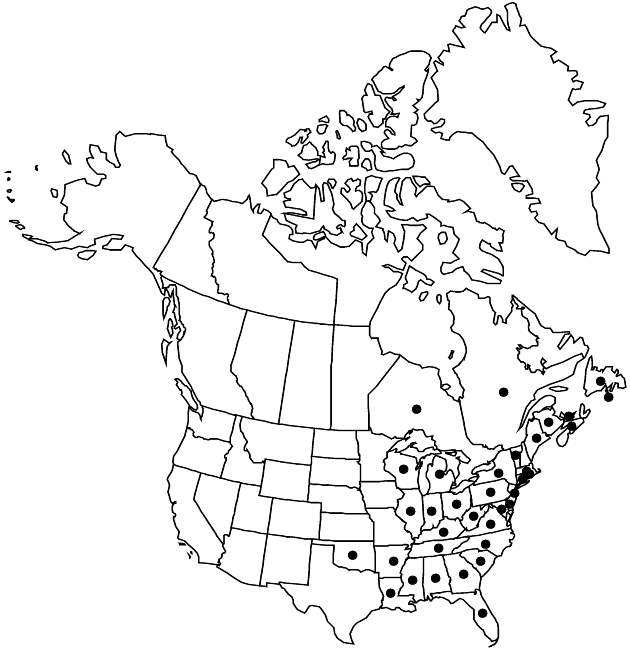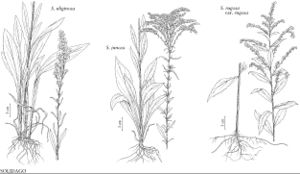Difference between revisions of "Solidago rugosa var. rugosa"
FNA>Volume Importer |
FNA>Volume Importer |
(No difference)
| |
Revision as of 18:42, 24 September 2019
Herbage sparsely to moderately relatively soft-hairy. Distal cauline leaf blades lanceolate to elliptic, not much reduced distally. Heads in compact to lax pyramidal arrays, branches divergent and recurved arrays, proximal branches sometimes much elongated. Rays florets 4–13. 2n = 18, 36.
Phenology: Flowering Aug–Oct.
Habitat: A range of soils, fields, woods and usually wet grounds, along water courses
Elevation: 0–1200+ m
Distribution

St. Pierre and Miquelon, N.B., Nfld. and Labr., N.S., Ont., P.E.I., Que., Ala., Ark., Conn., Del., Fla., Ga., Ill., Ind., Ky., La., Maine, Md., Mass., Mich., Miss., N.J., N.Y., N.C., Ohio, Okla., Pa., R.I., S.C., Tenn., Vt., Va., W.Va., Wis.
Discussion
Typical var. rugosa is a generally more northern race of the species but occurs infrequently scattered across the southern United States. Although var. villosa has often been recognized (e.g., H. A. Gleason and A. Cronquist 1991), it grades completely into var. rugosa. Single clones include shoots with long-branched arrays and others with short-branched ones not exceeding the subtending leaves. The variety is diploid throughout its range, with a few scattered tetraploids.
Subspecies 2 (2 in the flora): e United States; Mexico.
Selected References
None.
